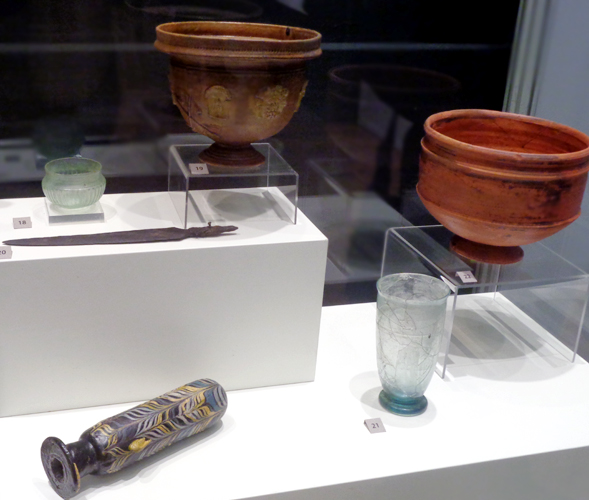Artifacts from the Apollonia Pontica antique necropolis in the Budjaka area of the Black Sea port town of Sozopol were among the most impressive findings at the 10th national exhibition named Bulgarian Archaeology. Dr. Margarita Popova from the National Museum of History and Dr. Teodora Bogdanova from the Archaeological Museum of Sozopol headed the excavations. An area of 1.2 ha was researched there over the past season. Dr. Bogdanova says that the most interesting artifact was a family tomb with impressive architecture, found on the territory of the huge site. It is the only one known so far from the antique Greek world, despite the intensive research of the Greek necropolises in Bulgaria and Romania. More from Dr. Teodora Bogdanova:
 “There were 7 burials inside, from two different periods. I.e., at first it was built up during the Hellenic epoch and was used as a family tomb. A total of 7 people were buried there, or the entire family. The elderly couple was in the central chamber, while three other graves obviously contained the remains of four children. The artifacts found inside are ceramic and glass vessels, terracotta figures and gold jewelry, the latter lying inside one of the children’s graves: a gold necklace and gold earrings of the ‘lion’s head’ type, popular over the Hellenic period. This whole facility was built up and used from the mid-3rd c. to the early 2nd c. BC. The central chamber was robbed at a later moment and the graves in the center were demolished. Obviously that was what the robbers could find. Then in the 1st c. AD the spot was again used for tombs – two of those have been found, dated to the Roman period. However, since they were not ruined, we decided that the ruining and burglary of the Hellenic tomb happened prior to the 1st c. AD – still in Antiquity. It looks like those people were pretty well off, as the objects which remained after the tomb’s offending show that the gifts were quite rich.”
“There were 7 burials inside, from two different periods. I.e., at first it was built up during the Hellenic epoch and was used as a family tomb. A total of 7 people were buried there, or the entire family. The elderly couple was in the central chamber, while three other graves obviously contained the remains of four children. The artifacts found inside are ceramic and glass vessels, terracotta figures and gold jewelry, the latter lying inside one of the children’s graves: a gold necklace and gold earrings of the ‘lion’s head’ type, popular over the Hellenic period. This whole facility was built up and used from the mid-3rd c. to the early 2nd c. BC. The central chamber was robbed at a later moment and the graves in the center were demolished. Obviously that was what the robbers could find. Then in the 1st c. AD the spot was again used for tombs – two of those have been found, dated to the Roman period. However, since they were not ruined, we decided that the ruining and burglary of the Hellenic tomb happened prior to the 1st c. AD – still in Antiquity. It looks like those people were pretty well off, as the objects which remained after the tomb’s offending show that the gifts were quite rich.”
Apparently someone knew that valuable objects were hidden inside and the tombs were attacked quite early in time. Fortunately the children’s grave was somehow at the periphery and remained untouched, to the delight of the archaeologists.

English version: Zhivko Stanchev
The attack in the "St. Nedelya" cathedral on April 16, 1925 is the deadliest terrorist act in the history of Bulgaria. It took place on Maundy Thursday and in terms of its brutality and premeditation, it has no analogue. During Holy..
On the day of Holy Wednesday, one of the last events before the saving sufferings for humanity of the Son of God is remembered. In her sincere repentance, a sinner managed to enter the house where Christ was staying and, wishing to testify to her..
Holy Tuesday is a day for teachings and final moral instructions. On this day the priests and the Jews listen for the last time to the teaching words of the Son of God in the temple. There, Jesus Christ gives an example of how to give charity –..

+359 2 9336 661
